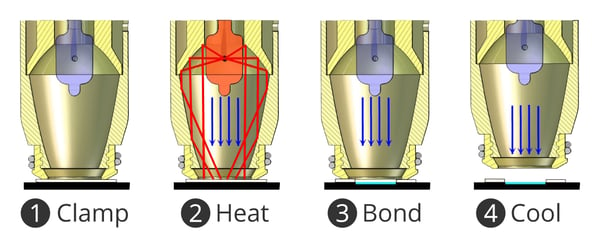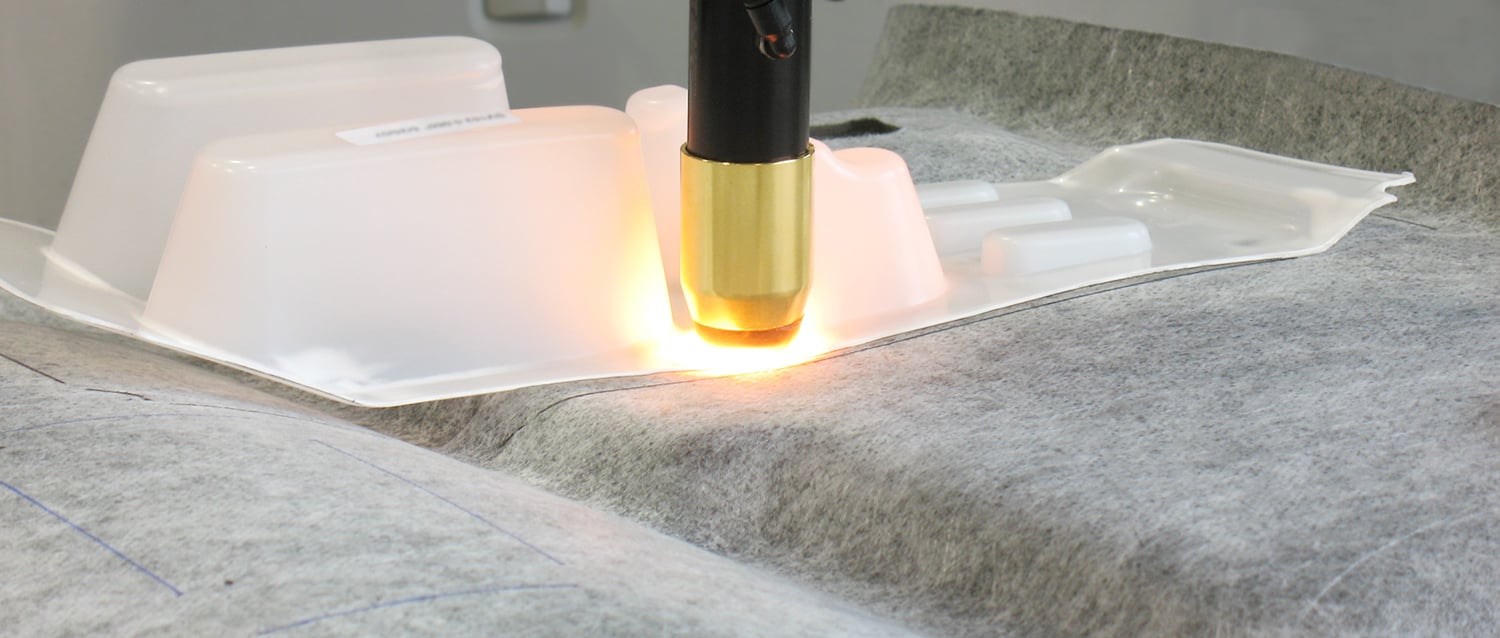How to reduce weight, space, and cost of a headliner assembly
What if I told you that you can reduce the weight and space of a headliner assembly while attaching B-side headliner components? It must be expensive, right? Wrong. In one application, cost was reduced by $3.27 while saving 1.46 lbs and 1 mm of stack height per vehicle. Most automakers look for ways to save a few ounces per vehicle, let alone almost a pound and a half! These savings were achieved using a process called InfraWeld®, which uses zero consumables and can change the way you manufacture headliner assemblies.
Before InfraWeld, hot-melt adhesive was commonly used to secure components including head-impact-countermeasures (HIC) and wire retention clips to a headliner; but there were drawbacks. To start, a hot-melt adhesive system can be messy and can present a burn hazard to operators. The thickness of the glue requires automakers to increase headliner assembly stack height, reducing valuable headroom space. Additionally, the glue is costly and heavy. By using InfraWeld, you can reduce weight, stack-height, and headliner assembly cost.

How does InfraWeld work?
First, the InfraWeld module extends and clamps the plastic components to the headliner scrim, creating an airtight seal around the weld area. Next, the reflective surfaces inside the module focus the IR energy from a technical-grade halogen lamp and direct it toward the weld interface. The energy transmits through the top part and is absorbed by the surface of the lower part. This is commonly referred to as through-transmission infrared (TTIR). As it absorbs energy, the weld area heats up and begins to soften. Meanwhile, air pressure inside the module forces the two softened components into each other. The lamp is turned off, and the module continues to clamp and apply pressure to the weld, allowing the materials to bond. Finally, the module retracts slightly, and cooling air is blown over the weld. The result is a robust joint that is stronger than the parent strength of the headliner itself.
What is the difference between InfraWeld and laser welding?
InfraWeld is similar to laser welding but has some key differences. Both processes use IR energy, and both transmit the energy through one component into another. However, InfraWeld emits a spectrum of IR wavelengths in a focused area, while laser emits a single wavelength that is collimated and intensely focused on a small point. These complementary technologies are both effective solutions for different plastic joining applications.
What materials work best with InfraWeld?
We’ve tested several materials with InfraWeld and found the process to be compatible with PP, ABS, GMT (such as Azdel®), PU, and more. For the InfraWeld process to be successful, the materials need to be compatible with each other. One component needs to be transmissive of IR energy and the other needs to be absorptive. Most commonly, the HIC or clip components are semi-transparent, and the headliner scrim is opaque black or gray. Of course, if you’re curious about two specific materials, we can always test them in our lab to find out how well they’ll work with the process.
So maybe it's time to consider InfraWeld for your next headliner application. If you have questions about material compatibility or are curious what an InfraWeld system would cost, please fill out the form below. Our engineers would be happy to help discover if InfraWeld is best for your next project.

